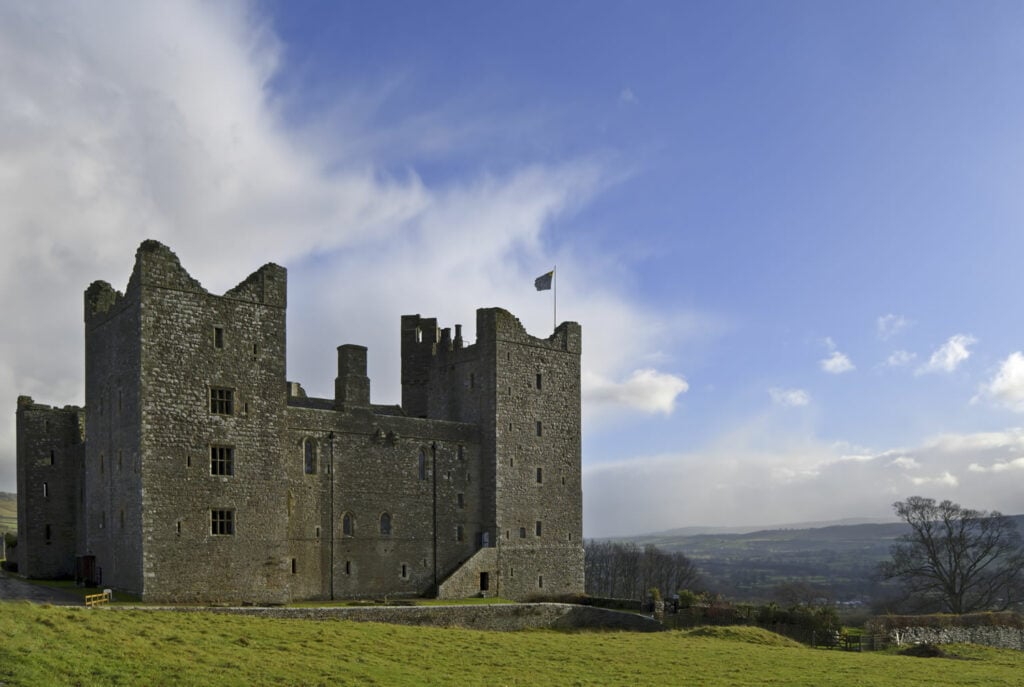Situated as a gateway to the stark and imposing topography of Wensleydale, Bolton Castle emerges as a giant fortress from the luscious rolling hills. Begun by one of the most powerful men of the 14th century, following a licence to crenellate, Richard le Scrope began construction of his castle in 1378/9 whilst acting as Lord Treasurer and Lord Chancellor to Richard II. It was to be a symbol of his status, command, and rule. The sturdy walls of what became this mighty rectangular structure eighteen years later, with four squat towers at each corner, was a tangible example that it was successful.

Unusually yet beneficially, we know the name of Bolton’s master mason—the man responsible for the design of this epic construction. Johan (John) Lewyn was among the most prolific masons of his day and had worked as an apprentice at Westminster Abbey and Windsor Castle. What Leywn created at Bolton was a dominating fortress, enclosing an inner courtyard, and accessed through a gatehouse to the east. Whether the castle had a moat is still up for scholarly debate. Regardless, an obscene amount of money was spent on building Bolton: a reputed 18,000 marks in the twenty years it took to construct, which, in today’s conversion, amounts to millions. It’s no wonder than that Tudor statesman Sir Francis Knollys described Bolton as having ‘the highest walls of any house’ he’d ever seen.
Its architecture, however, paled into insignificance as its inhabitants began to take centre stage. The most infamous was Mary, Queen of Scots, who was sent to Bolton as a prisoner in 1568, following her escape from Scotland. She was provided with relatively luxurious chambers in the south-west tower range, but Mary’s cousin and captor, Queen Elizabeth I, chose Bolton intentionally to ensure her Catholic revival to the throne would be isolated away from any Catholic influence in the north. Mary spent six months within the confines of the castle under the custody of the ninth Baron Scrope and Knollys.
When civil war came for England in the 17th century, it also rang the death knell for Bolton. John Scrope held the castle for the Royalist cause which led to Parliament besieging it for a year. Scrope was forced to surrender in November 1645 which left the castle open to a slight, rendering much of the structure uninhabitable. Still, the castle endured, and to this day is owned by a direct descendent of the Lord Scrope who first built it in the 14th century.